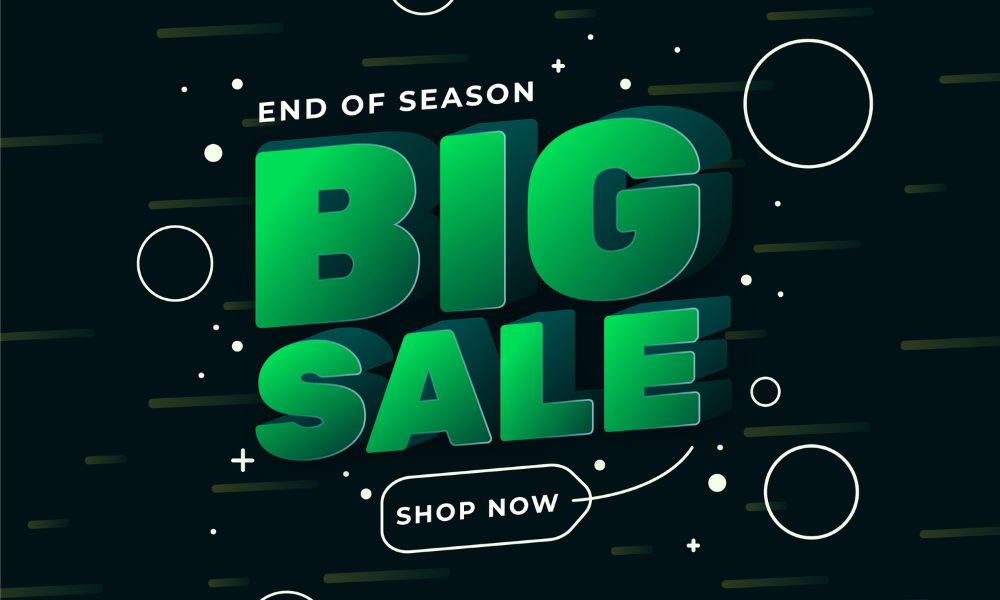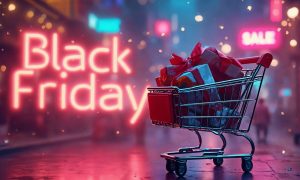
Remember the classic Black Friday image? Crowded stores, long lines in the cold, and a race to grab the last discounted TV. That chaos has evolved into something much bigger, a full shopping season that starts weeks earlier and stretches well past Cyber Monday. The excitement is still there, but the way people shop and the way brands sell have changed dramatically.
This article breaks down the latest Black Friday shopping trends shaping the 2025 season. You’ll see how timing, technology, and shopper expectations are redefining retail, and what it really takes for brands and buyers to stay ahead.
Why This Year’s Black Friday Trends Demand Your Attention
Let’s be direct. Black Friday is no longer a single day. It’s now a full season of strategic shopping and marketing. The frenzy has been replaced by a more calculated, value-focused approach. Consumers are smarter, and their expectations are higher.
They’re not just chasing discounts; they’re looking for meaningful purchases that align with their values and budget. Ignoring these shifts means leaving money on the table as a shopper or losing market share as a business. This isn’t just interesting information; it’s your playbook for thriving in today’s retail reality.
Shoppers are more informed, connected, and intentional with their spending. They compare prices across platforms, use AI-driven tools to track deals, and expect personalization both online and in-store. On the other side, brands face pressure to create experiences that feel authentic, not manipulative. The ones winning this season are those that listen to their audience, use data wisely, and offer value that goes beyond temporary discounts.
The Top 4 Black Friday Shopping Trends
These are the fundamental shifts redefining the holiday shopping season. Understanding this list is the first step to mastering the next Black Friday season.
1. The Big Shift in Timing and Scope
Black Friday used to be about one big day. People lined up before dawn, stores opened early, and shoppers fought for limited deals. Now, that single day has stretched into a month-long event that begins as early as October. What started as a retail experiment turned into a global trend that changed how both brands and consumers plan their entire holiday season.
The modern shopper no longer waits for a specific date. Early access sales, pre-Black Friday deals, and extended Cyber Week promotions have blurred the lines between November and December. This shift has created both opportunity and pressure. Brands now need to spread their marketing efforts over several weeks instead of relying on one weekend.
For shoppers, this new timeline means more chances to find value and compare offers. But it also means more noise. The number of ads, emails, and social media campaigns increases every year, making it harder to tell what’s truly worth buying. Successful consumers approach the season strategically, tracking prices and timing their purchases with precision.
For brands, the extended season demands better planning and smarter budgeting. Launching campaigns too late can mean losing visibility, while starting too early can lead to deal fatigue. The winners are those who understand the rhythm of this new retail season, balancing early promotions with high-impact offers when the buying intent peaks.
In short, timing has become one of the most powerful tools for success. The question is no longer when Black Friday starts, but how well you align your strategy to match your audience’s behavior throughout the season.
2. Mobile, Online and In-Store – The Channels Mixing Up
Shopping no longer happens in one place. Today’s customers move freely between their phones, laptops, and local stores, expecting every touchpoint to deliver the same convenience and clarity. The line between online and offline shopping has practically disappeared.
Mobile continues to dominate. In 2024, over 70% of Black Friday purchases were made on smartphones, and that number keeps climbing. Consumers scroll, compare, and check out within minutes, often during short breaks or late at night. This shift means that brands can no longer treat mobile as an afterthought. Page speed, checkout flow, and mobile payment options directly affect sales.
In-store shopping, however, is far from dead. Many shoppers still enjoy visiting physical stores for the experience, product testing, and instant gratification of taking purchases home. The key difference is that most of them research online first. This creates a hybrid buyer who expects a smooth transition between online browsing and in-store buying.
Successful brands recognize that this is not a competition between channels but a collaboration. They integrate online and offline data to understand customer intent better and personalize every step of the journey. Retailers that offer consistent pricing, cross-channel loyalty programs, and real-time inventory updates are turning convenience into a competitive advantage.
For shoppers, this blended model brings flexibility. They can reserve online and pick up in-store, compare prices on the go, or use mobile apps to unlock exclusive deals while shopping locally. The result is a seamless experience that puts the customer in control, which is exactly where the market is headed.

3. New Behaviours & Expectations from Shoppers
Shoppers today are not just looking for discounts. They want flexibility, control, and experiences that feel personal. The way they approach Black Friday is smarter and more intentional than ever before. Instead of reacting to flashy promotions, they plan their purchases with clear goals in mind, comparing offers across platforms and choosing brands that align with their lifestyle and values.
Using Buy-Now-Pay-Later (BNPL), Splitting Payments, Budgeting Smarter
Financial awareness plays a major role. The rise of Buy-Now-Pay-Later options has changed how people manage their spending. Shoppers are spreading out payments to stay within budget without missing deals, making high-ticket items more accessible. For brands, this trend opens doors to new customers, but it also requires transparency about terms and fees. Hidden costs or unclear repayment policies can quickly damage trust.
At the same time, many consumers are actively tracking expenses and avoiding impulse buys. They are using digital wallets, budgeting apps, and price-tracking tools to make sure their Black Friday spending fits within a bigger financial plan. The result is a more deliberate kind of shopping that values clarity over chaos.
Demand for Personalization, Seamless Social Commerce, and Direct-from-App Shopping
Modern shoppers expect experiences tailored to them. Generic discounts no longer stand out when everyone is promoting the same percentage off. Personalization now drives conversions. People want recommendations that make sense based on their browsing habits, wish lists, and past purchases.
Social commerce is also taking center stage. Platforms like Instagram and TikTok are not just for inspiration anymore, they are becoming checkout points. Consumers can discover, review, and buy directly from the same feed. For brands, this means optimizing content for both engagement and conversion. Every scroll, click, and view becomes part of the purchase path.
Direct-from-app shopping also continues to grow. Mobile apps that combine fast loading, easy navigation, and secure payment options win the loyalty of repeat buyers. The less friction in the buying process, the higher the conversion rate.
Shoppers are tired of poor website performance, miscommunicated deals
Shoppers are also more vocal about what frustrates them. Slow websites, broken links, or confusing checkout processes are instant deal breakers. Misleading discounts or unclear promotions hurt brand credibility faster than ever, especially when negative feedback spreads through social media.
People want honest communication. They want to know the final price before checkout, the real shipping times, and whether a discount is genuine. Brands that respect transparency are building long-term trust, while those that rely on quick tricks are losing relevance.
In short, the modern Black Friday shopper values honesty, convenience, and personalization more than ever. Meeting these expectations is not optional, it’s the new foundation of successful retail.
4. Sustainability, Ethics & “Green” Alternatives
Sustainability has officially entered the Black Friday conversation. What used to be a day known for mass consumption is now being challenged by shoppers who care about the impact of their purchases. Many consumers are questioning not just what they buy, but who they buy it from and how those products are made.
This shift is driven by growing awareness about waste, overproduction, and ethical labor. Shoppers are looking for transparency, they want to know whether brands use recycled packaging, sustainable materials, or support fair working conditions. Even if the deals are tempting, many people will walk away from brands that ignore these values.
For retailers, this change is not a trend to tick off a marketing checklist. It’s a long-term shift in buyer mindset. Green marketing only works when it’s backed by genuine action. Consumers can easily spot empty slogans or surface-level sustainability claims. The brands earning loyalty are the ones that communicate real progress, show proof of ethical sourcing, and reduce unnecessary packaging without sacrificing quality.
At the same time, alternative events like “Green Friday” or “Buy Nothing Day” are gaining visibility. Some brands are using this moment to promote repair services, product recycling, or donation campaigns instead of pushing more sales. While not every business can fully pivot, incorporating even small sustainable choices into Black Friday campaigns sends a clear message: your brand understands the bigger picture.
This growing awareness is shaping how people perceive value. A low price alone no longer guarantees conversion. Shoppers now factor ethics, sustainability, and brand transparency into their decision-making. For brands willing to adapt, this opens new ways to connect with audiences who want to buy smarter, not just cheaper.

What Brands Should Do Differently This Year
Black Friday is not about louder ads or deeper discounts. It’s about smarter strategy, clearer communication, and understanding how shoppers actually think and behave. The brands that stand out this year are not necessarily the ones offering the biggest cuts, but the ones that make buying feel effortless and meaningful.
1. Plan Before the Rush:
The extended Black Friday season means that timing is everything. Start planning campaigns weeks in advance, not days. Identify the moments when your audience is most active and align promotions with those peaks. Use data from last year to understand when engagement and conversions were highest. A well-timed offer can outperform a bigger discount that arrives too late.
2. Focus on Mobile and Social Commerce:
Most purchases now start on a phone. If your website isn’t mobile-friendly or your checkout process takes more than a few steps, you’re losing sales. Optimize every touchpoint for speed, simplicity, and trust. On social media, treat your presence like a storefront. Use short videos, user-generated content, and direct shopping links to turn interest into action.
If you’re planning campaigns that rely on creators or social engagement, try using an influencer discovery tool to identify profiles that fit your audience before the sales start.
3. Use Data and Segmentation to Personalize Offers:
Generic email blasts are no longer effective. Your audience expects relevance. Segment your customers based on interests, purchase history, and browsing behavior. Send personalized recommendations that feel curated, not automated. Even small touches, like suggesting complementary products or adjusting offers based on location, can dramatically improve conversion rates.
Partnering with creators through an influencer hiring platform can also help you reach niche audiences with authentic, data-backed messaging.
4. Measure Long-Term Value, Not Just Immediate Sales:
Black Friday is an opportunity to grow your customer base, but success shouldn’t be measured only by one weekend’s numbers. Track retention, repeat purchases, and customer lifetime value. A single sale with no follow-up strategy is a missed opportunity. Create post-purchase engagement through loyalty programs, exclusive updates, or early access to future sales.
The best-performing brands will be those that act with precision. They’ll build campaigns around timing, relevance, and trust instead of just price. When your Black Friday strategy aligns with what your customers actually want, you don’t need to shout to be heard, you’ll already be the brand they remember.
What Shoppers Should Focus On
Black Friday is designed to grab attention, but not every deal deserves it. The most successful shoppers this season are the ones who combine excitement with strategy. They know what they want, track prices early, and recognize when a discount is genuine. Black Friday can still be a great time to save, but only when approached with a clear plan and a little skepticism.
A) How to Spot Real Value vs Hype
Not every “40% off” tag means a true bargain. Many brands inflate prices before the sale or offer discounts on older models to clear inventory. The key is knowing the regular price before the sale starts. Shoppers who follow prices ahead of time can spot inflated discounts instantly.
Real value also depends on how long a product will serve you. A smaller discount on something durable or essential often saves more in the long run than a big cut on a trendy item you’ll replace in a few months. Before you buy, ask yourself whether the product solves a real need or just feels exciting in the moment.
B) Using Tools to Avoid Regret
Smart shoppers use digital tools to make better decisions. Price-tracking extensions, deal alerts, and wish lists can save both money and time. They let you compare offers across multiple platforms and track when the price actually drops.
Creating a wish list before the sales start also helps you stay focused. It limits distractions from impulse deals and helps you prioritize items that truly matter. After the sale, these tools can also notify you if an item you missed goes on clearance, giving you another chance without the rush.
C) Balancing Impulse Buys with Strategic Purchases
It’s easy to get caught up in the excitement, but impulse buying often leads to buyer’s remorse. Set a budget before shopping and separate essential purchases from nice-to-have items. If something outside your plan catches your eye, give it 24 hours before checking out.
For larger purchases, think long term. End-of-year deals can be a smart way to invest in tech, appliances, or tools you’ll use throughout the year. The key is to buy with purpose, not pressure. Strategic shoppers treat Black Friday as an opportunity to prepare for the months ahead, not just a moment to spend.
Looking Ahead – What’s Next After Black Friday
Black Friday no longer marks the end of the shopping season. It’s just the beginning of a longer cycle that blends into holiday sales, year-end clearances, and even New Year promotions. The habits formed during this period often carry into the next year, shaping how people shop and how brands plan their marketing calendars.
For shoppers, this means more opportunities to find value but also more temptation to overspend. The best strategy is to treat Black Friday as part of a bigger financial picture, not a one-time event. Smart buyers are using the deals to invest in items that add long-term value rather than chasing short-term excitement.
For brands, the post-Black Friday period is a chance to build loyalty, not just close out sales. Follow-up emails, personalized recommendations, and loyalty rewards can turn one-time shoppers into repeat customers. The brands that perform best are those that see every Black Friday transaction as the start of a relationship, not the end of one.
If your brand needs expert help designing ongoing influencer or retention campaigns, an experienced influencer marketing agency can manage outreach, creative direction, and performance tracking for you.
The biggest shift going forward will be about balance. Black Friday will keep its energy and excitement, but the focus is moving toward sustainability, personalization, and meaningful experiences that last beyond the checkout page.

The Final Summary
The story of Black Friday in 2025 is one of evolution. It’s no longer just a shopping day, it’s a season, a strategy, and a reflection of how people think about value. Shoppers are more informed, brands are more strategic, and the competition for attention is fiercer than ever.
Those who succeed will be the ones who adapt quickly. They’ll respect their audience’s intelligence, stay transparent, and deliver experiences that make people feel confident about their choices. Whether you’re running campaigns or filling your cart, understanding these Black Friday shopping trends will help you make smarter moves this season, and set the tone for everything that comes next.
Ready to plan your next campaign with creators who convert? Explore Hypefy’s influencer marketing platform and start building smarter partnerships before the next shopping season begins.



